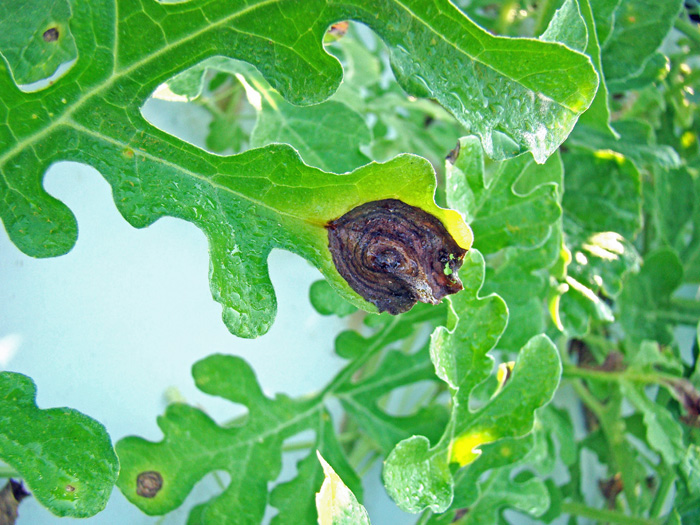By Clint Thompson

The best defense against gummy stem blight disease is a good offense. Protectant fungicides are available for Alabama’s watermelon producers to guard against it, but growers need to be proactive in applying the fungicides and not be reactive, says Ed Sikora, professor and Extension plant pathologist in the Department of Entomology and Plant Pathology at Auburn University.
“With gummy stem, I don’t believe we have any resistant varieties right now. You can follow a fungicide spray program when conditions favor the disease. Products like Aprovia Top and Luna Experience are considered good in our Southeast Guide. Those would be ones that our commercial growers may be able to afford and find in the state,” Sikora said. “Chlorothalonil is considered fair. This is a product that has the active ingredient and goes by a number of different trade names (Daconil and Bravo).”
“It’s a protectant fungicide that needs to be on the plant when weather conditions favor development. That’s when you start spraying. You don’t spray when the disease starts showing up on the plant because you get behind it pretty quick. This disease will take you out quickly.”
Gummy stem blight is most commonly found on melon crops. It favors wet conditions, much like the conditions experienced last spring throughout most of the Southeast.
It shows as round, target-shaped spots, both in the lobes or at the edges of leaves. Cankers will develop on the main stem near the nodes. Gummy stem blight will start on older leaves in the center of the plant. It is possible to observe gummy stem blight with anthracnose, another fungal disease that impacts mostly watermelons.
“Gummy stem blight is a disease that when growers see this, they start to cry,” Sikora said.









